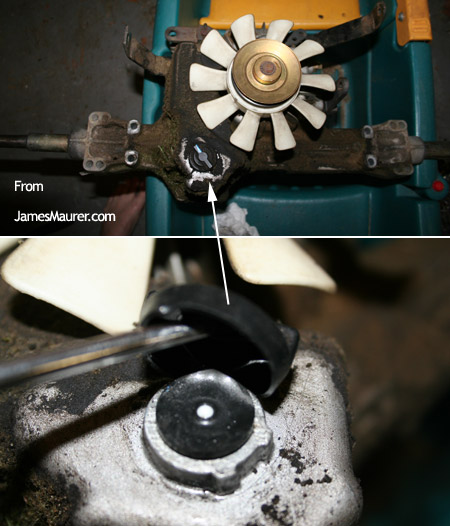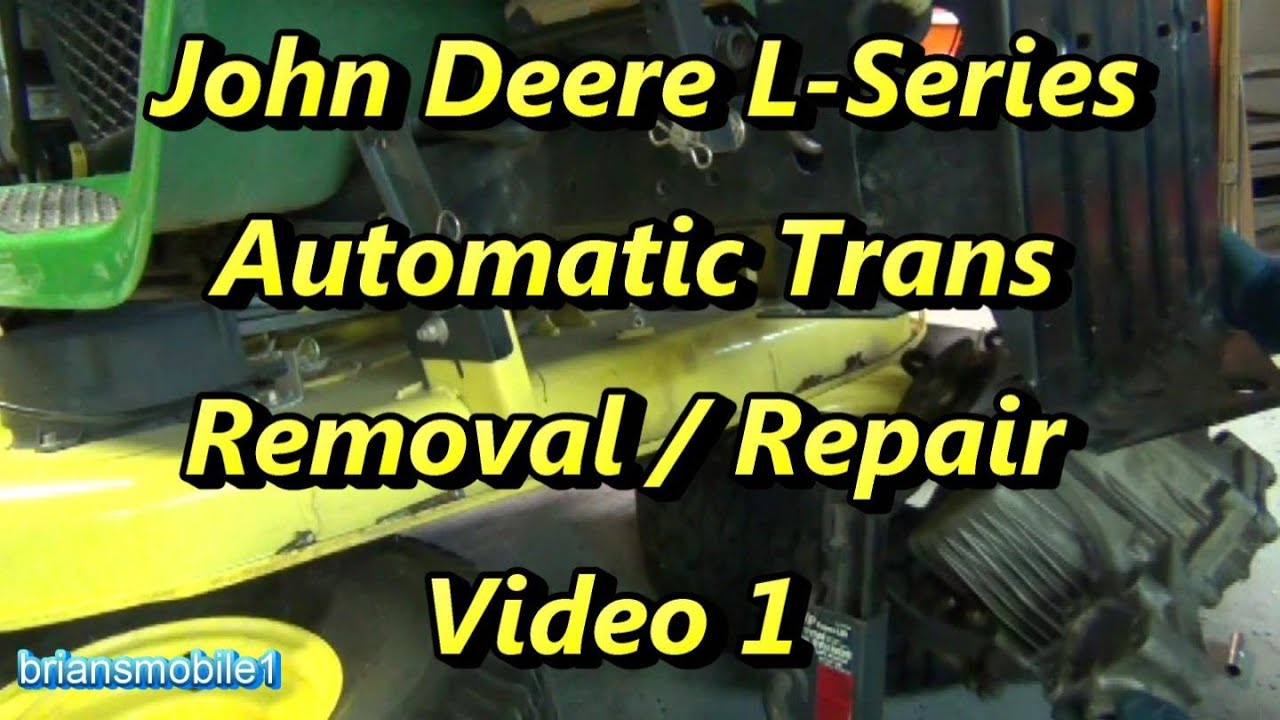John Deere Lx176 Hydrostatic Transmission Problems can be a major inconvenience for any tractor owner. The transmission is responsible for the movement of the tractor and when it malfunctions, it can cause serious problems. There are a few different ways to identify hydrostatic transmission problems in your John Deere Lx176 tractor.
If you own a John Deere LX176 with a hydrostatic transmission, you may have experienced some problems with it. The most common issue is that the transmission will not engage properly, or will slip out of gear while in use. This can be extremely frustrating, and can cause serious damage to your lawn mower if not fixed.
There are a few things that you can do to try and fix this problem on your own. First, make sure that the transmission fluid is at the correct level. If it is too low, it could be causing the slipping.
You should also check for any leaks in the system, and tighten any loose fittings.
If these tips do not fix the problem, you may need to take your lawn mower to a John Deere dealer or service center for repairs.
John Deere LX176 Riding Mower update.
How Do You Adjust a John Deere Hydrostatic Transmission?
If your John Deere lawn tractor has a hydrostatic transmission, you may occasionally need to adjust the transmission. This is a relatively easy process that can be done in just a few minutes.
To adjust a John Deere hydrostatic transmission, start by removing the dipstick from the oil fill tube.
Next, use a wrench to loosen the jam nut on the side of the transmission. Then, turn the adjusting screw clockwise or counterclockwise to raise or lower the deck height. Finally, retighten the jam nut and replace the dipstick.
Keep in mind that it’s important not to over-tighten the adjusting screw, as this can damage the transmission. If you’re unsure about how to properly adjust your John Deere hydrostatic transmission, consult your owner’s manual for more detailed instructions.
How Do You Troubleshoot a Hydrostatic Transmission?
There are a few things you can do to troubleshoot your hydrostatic transmission.
First, check the oil level in the transmission. If it is low, add oil until it reaches the full line on the dipstick.
Second, check for any leaks in the system. If there are any, tighten the fittings or replace the hoses. Third, make sure the transmission filter is clean and free of debris.
Fourth, bleed the air from the system by opening bleeder screws located on each side of the transmission. Fifth, if none of these steps work, consult your owner’s manual or contact a certified technician for further assistance.
What Causes a Hydrostatic Transmission to Lose Power?
There are a few different things that can cause a hydrostatic transmission to lose power. One of the most common reasons is because of a loss in hydraulic fluid. This can happen if there is a leak in the system or if the fluid level gets too low.
Another reason why a hydrostatic transmission can lose power is because of an issue with the pump. If the pump isn’t working properly, it won’t be able to build up enough pressure to keep the transmission running properly. Lastly, something as simple as dirty hydraulic fluid can also lead to power loss in a hydrostatic transmission.
When dirt and debris get into the fluid, it can start to clog up the system and prevent it from working correctly.
What Type of Fluid Goes in a John Deere Hydrostatic Transmission?
If you’re a John Deere owner, then you know that one of the most important aspects of your tractor is the hydrostatic transmission. This type of transmission is what allows your tractor to have infinite speed options and makes it so easy to operate. But what kind of fluid goes in a John Deere hydrostatic transmission?
The answer may surprise you – there’s no special fluid that goes into a John Deere hydrostatic transmission. In fact, any good quality hydraulic oil will do the trick. That means you don’t have to go out of your way to find a special type of oil for your tractor – any hydraulic oil will work just fine.
So if you’re ever wondering what kind of fluid goes in a John Deere hydrostatic transmission, now you know – it’s just regular old hydraulic oil!

Credit: www.jamesmaurer.com
John Deere Hydrostatic Transmission Problems
If you’re a John Deere owner, you may have experienced hydrostatic transmission problems. Common issues include the machine not moving, loss of power, or leaking fluid. While these problems can be frustrating, they can often be resolved with some troubleshooting.
Loss of power is the most common issue. This can be caused by a few different things, including low fluid levels, air in the lines, or a problem with the pump. If your machine is losing power, check the fluid levels first.
If they’re low, add more and see if that solves the problem. If not, you may need to bleed the lines to get rid of any air pockets. Finally, if neither of those fixes work, there could be an issue with the pump itself.
Leaking fluid is another common problem. This is usually caused by a faulty seal or gasket. Inspect all of the seals and gaskets on your machine and replace any that are damaged or worn out.
If your John Deere won’t move at all, there are a few things you can check. First, make sure that the parking brake is released and that the transmission lever is in neutral. Then check the fluid levels and add more if necessary.
Finally, bleed the lines to get rid of any air pockets that might be causing problems.
Hydrostatic transmission problems can be frustrating, but fortunately they’re often fairly easy to fix yourself with some basic troubleshooting steps like these ones!
Conclusion
The John Deere LX176 lawn tractor is a great machine, but it’s not without its problems. One common issue that owners of this tractor face is hydrostatic transmission failure. This can be a costly repair, so it’s important to be aware of the signs that your transmission is failing.
These signs include: slow speeds, loss of power, and leaks. If you notice any of these issues, it’s best to take your tractor to a qualified mechanic for diagnosis and repair.
